Welcome Mischa,
It's easy to get swamped with information here, so I wanted to share some notes with you
Please check out
@giomania 's notes:
Dahua Starlight Varifocal Turret (IPC-HDW5231R-Z)
I have also made which are a summary of a lot of the reading I've been doing here,:
Looking for some advice and direction!
I'll attach some notes from another site which I posted that will be useful
Have fun joining us here.
----
How many cameras do I need?
That's a difficult question to give a good answer to as it varies depending on the quality of the camera and what you are attempting to accomplish. I have seen 32 cameras in just one pharmacy, so you should not be shy about installing more cameras than you initially imagined.
For a modest house expect decent coverage with 6-8 good cameras. For better coverage and / or larger houses / buildings plan on getting a system which can support 16+ cameras.
Recommended Locations for outside cameras:
( For modest sized houses cameras can cover multiple areas - example one of the front of the house cameras can cover parking area, expect to use 6-8 cameras for a modest size home. )
2x for front of house
1-2x covering car parking area if outside
1-2x covering front entrance
2x covering side of house ( one on each side )
2x covering back of house
1-2x covering each entrance
1-2x covering sidewalk / street in an attempt to ID vehicles ( you may need a better "zoom" for this camera )
Recommended - optional
- locations for indoor cameras: ( If wiring a new house add cat5e/cat6 connections even if you decide not to include cameras )
1x camera per each entrance
1x camera in the garage
1x cameras hidden facing out from the TV/media center area at face level
Addition DIY installation notes:
1) Bench test all security camera systems before installing to determine if you are happy with their performance. Test both day light conditions as well as night time / low light conditions.
2) test the view in the locations you plan to place the cameras before running your wiring, you may need to adjust the location a bit. A gopro on a stick, or your cell phone on a selfie stick can be useful here. You can also run temporary wiring to the location and use the phone app and view the cameras in realtime to adjust the view. Remember to take account of the FOV ( 88 degrees for these cameras ) of the cameras you plan to install - it will be different than your cell phone or gopro camera.
To obtain better night time images try to minimize the view of surfaces which will bounce the IR light back to the camera and negatively affect the night time exposure. ( reduce the view of walls, roof over hangs, fascia, soffits, .. )
3) If you plan to use the cameras to potentially ID suspects, place the camera(s) lower than 8ft covering potential entry ways. Also remember the spec for IDing purposes is 100+ppf. Thus wide FOV cameras have shorter ID distances. A 4K camera will have 2x the distance to ID compared to a like 2MP / 1080P camera ( given both captures same quality of pixels ).
4) keep the wiring bundle protected from the elements by either pushing it back into the wall / attic area or use a junction box ( for this model please see the reference above ) I used silicone tape such as the following to help keep the water out of the connections
https://www.harborfreight.com/1-i...61414.html
5) recommend getting a 1000ft bulk cat5e/cat6 cable from monoprice ( watch them for sales during weekends, get solid copper ) and the appropriate
tools to crimp RJ45 ends to the cables - this will allow you to drill smaller holes during your installation. ( otherwise you will need 3/4"+ holes ) [
DO NOT buy CCA (Copper Clad Aluminum) wire - it is a fire hazard ]
6) Have a friend help you with the wiring pulls
New Construction additional notes:
- Before the drywall goes up is the most affordable time to add wiring. Pull wires to all locations you may use - better to over do it now than under do it.
- Pull N+1+ cat5e/cat6 wires to each location, N=the number you plan to use, pull at least one extra line.
- Remember to add wiring for alarms, extra electrical sockets to support your security cameras, media center, data center ( that's where your switch, NVR, NAS will be ), as well as the front entrance, wifi access points and routers, voice control units like Echo Dot, speaker wiring,..
- Pull electrical and several cat5e/cat6 lines to your front gate area. ( 2 sets of underground conduit is best - one for electrical the other data/cat5e/cat6 )
- Plan for the option to install video intercom / video doorbell by the front door and gate. ( example of such a product http://www1.dahuasecurity.com/pro...-7391.html ) Plan for future upgrades as this tech is changing quickly.
- Have the electricians install METAL boxes - I have seen too many subcontractors and later tenants break plastic gang boxes.
- Inspect the job site regularly - even daily, Inspect for straightness and squares, many subcontractors measure only once...
Cat 5e / Cat 6 ethernet cable:
DO NOT buy CCA (Copper Clad Aluminum) wire - it is a fire hazard
- Recommended that you buy buik cat5e/cat6 cable and not use the cable which comes in the kit, as if you need to return it you will have to also return the cables.
- Recommended vendor for bulk Cat 5e / Cat 6 cable is monoprice, they often have sales during the weekend.
- Either Cat 5e or Cat 6 cable will work with these cameras. Normally Cat6 cable is a bit thicker due to the plastic separator in the cable. Also Cat 6 cable often has wires slightly thicker than what you see in Cat 5e cables. While a thicker copper wire means less voltage loss over the run, it may not be significant for most of us. Note the spec for ethernet and PoE is 100M / 328 feet.
- If you are pulling multiple wires through 1/2" EMT pipes or other tight spots it maybe better to use cat 5e.
- If you are only buying one bulk box of cable you may want to get cat6 in case you would like to wire up other locations.
- There are numerous types of Cat 5e / Cat 6 cable, you want to get Solid unshielded cable, either for in-wall installation or plenum rated cable ( better for multistory buildings and business type buildings ).
- If you plan to have the cables exposed to direct UV get a UV rated cable, or place the cable in conduit. Otherwise the cable will degrade over time.
- Also get RJ45 ends which are rated for solid wires, as well as a crimping tool.
- Remember to cut the cable longer than you think you will need, and leave some extra length in case you need to adjust the location a bit.
- Recommend pulling N+1 or more cables to each location, where N = number of cameras you plan to have. This way if you decide to add an additional PoE or ethernet device nearby you can in the future.
- If your attic is too short to easily work in recommending using Grey PVC pipe 3/4"+ and pushing the sections to the locations you want to run the cat5e/cat6 cabling to.
- Have a friend help you pull the cabling so you can reduce snags and knots which may cause breakages. Also remember not to pull the cable with too much force as it is more delicate than electrical cables that you may be used to pulling.
- You can use the pull tools which electricians use to help with the wiring pulls.
- Unshielded vs shielded cable - typically you can avoid using shielded cable, just try to keep the cable 1 foot or more from electrical lines, florescent lights, and electrical motors. If you must pass by something which produces EMF / electrical interference you can use a section of EMT pipe in that location to pass the cat5e/cat6 cable through.
- Thieves have been known to cut telcom cables to houses as well as cat5e/cat6 to cameras - if you feel the need to protect your cables do consider putting them in conduit or run the lines inside the wall. ( Metal EMT works well in most cases, in humid environments you may want to consider less strong non-metal conduit. )
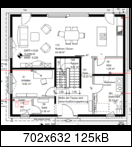
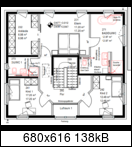

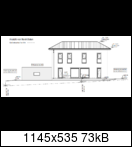
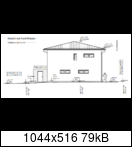 [URL='http://abload.de/image.php?img=sd-ostenxvbvy.png']
[URL='http://abload.de/image.php?img=sd-ostenxvbvy.png']
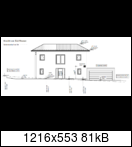 [/URL]
[/URL]



 [URL='http://abload.de/image.php?img=sd-ostenxvbvy.png']
[URL='http://abload.de/image.php?img=sd-ostenxvbvy.png']
 [/URL]
[/URL]